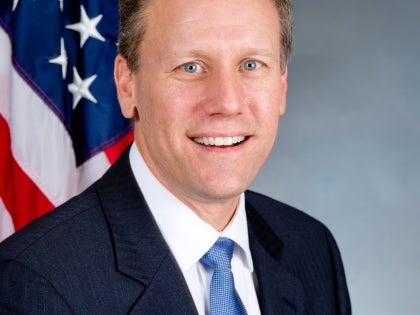
Program to Create 14,000 Green Jobs, Reduce Consumers’ Energy Costs Passes Senate
David J. Valesky
September 11, 2009

(SYRACUSE, N.Y.)—Senator David J. Valesky (D-Oneida) today praised the passage of comprehensive economic development legislation that he co-sponsored, the Green Jobs/Green New York program, which will create 14,000 jobs and save New Yorkers $1 billion on their energy bills.
“The Green Jobs/Green New York program is another big step forward for the Upstate New York economy,” Senator Valesky, Vice President Pro-Tempore of the State Senate, said. “Addressing the region’s higher energy costs while creating jobs and encouraging business growth is a great example of the creative thinking we need to get our economy back on track.”
The legislation, which passed by a vote of 52-8, aims to goal of weatherizing one million homes, businesses, and not-for-profits in the next five years, thereby reducing carbon emissions caused by outmoded construction. In doing so, the program creates a need for an estimated 14,000 new jobs. In addition to the bill’s prime sponsor, Senator Darrel Aubertine, Senator Valesky was joined by other State Senators in the region, Senator Joseph Griffo (R-Rome) and Senator James Seward (R-Oneonta), in support of this important and forward-thinking program.
“The Green Jobs/Green New York program is significant for Upstate New York especially because it addresses two of our most serious problems—job loss and high energy costs, and does this by leveraging carbon credits, not taxpayer dollars.” Senator Valesky said.
Specifically, the program:
· Will be funded with revenue raised by the auction of carbon emission credits through the Regional Greenhouse Gas Initiative. This funding will be used to leverage private and federal investments. The bill allocates $112 million from these auctions to NYSERDA. Auctions of carbon emission credits over the last two years raised $126 million, with an estimated $75 million more expected in the next two auctions this year alone.
· NYSERDA will establish a revolving loan program to provide up to $13,000 per residential customer to retrofit a home, and up to $26,000 to retrofit each qualifying business, and also conduct energy audits, program administration and a credit enhancement for critical private sector capital investments.
· In partnership with the Department of Labor, NYSERDA will also create workforce training programs throughout the state to ensure that the state’s workforce is highly trained and in place to handle mass-scale retrofitting.
· The program will front the cost of the work, enabling property owners to afford energy efficient retrofits. Although property owners will repay the full cost over time, their total energy usage will be reduced by 30-40%, and the loan payment on their energy bill will be less than what they saved, yielding a net saves to the property owner.
· Local contractors, certified to perform the retrofits will be able to expand their crews, creating new and permanent jobs in green construction and additional jobs in local businesses and manufacturing that serve those new workers.
· Loans will be eligible to home and business owners in rural and urban communities throughout the state.
The legislation sets up a reliable mechanism for collecting revenue to recoup the costs of retrofitting, including “on-bill recovery” where customers can repay the costs affordably over time. For example:
· A customer is currently paying $100/month in energy costs.
· After retrofitting their home, the customer saves $30 each month and receives a bill of just $70.
· To repay the loan for the retrofitting, $24 would be assessed on the lower bill, leaving a net savings of $6, or 6 percent less than what they had been paying, before the capital improvements were completed on their home or business.
· This continues to save them money immediately, and will produce significantly lower bills after the project has been fully repaid.
By removing key barriers to weatherization, including the upfront costs to home and business owners and lack of enough skilled labor to do mass-scale retrofits, the state will finally have a program that can fully and successfully implement a “green” vision by undertaking broader non-energy retrofits such as low-flow water fixtures and green roofs that will reduce global warming.
##
